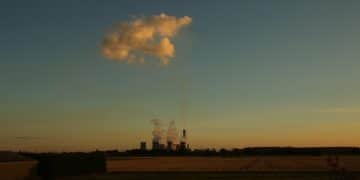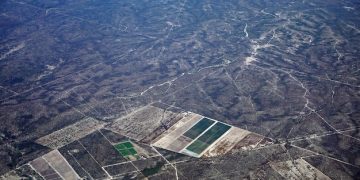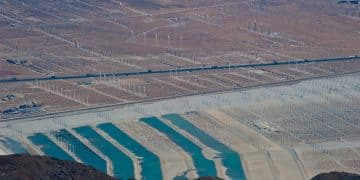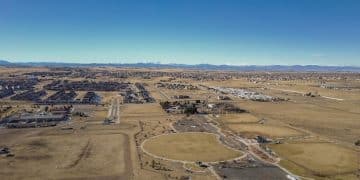EPA Methane Regulations: Impact on Natural Gas Power Plants

The Environmental Protection Agency (EPA) has introduced new regulations aimed at significantly reducing methane emissions from the oil and natural gas industry, including natural gas power plants, to combat climate change and improve air quality.
Are you aware of the significant changes coming to natural gas power plants? The EPA’s new methane regulations are set to reshape the energy landscape. Let’s delve into what are the New EPA Regulations on Methane Emissions and How Will They Affect Natural Gas Power Plants?
Understanding the EPA’s New Methane Regulations
The Environmental Protection Agency (EPA) has recently finalized a comprehensive set of regulations targeting methane emissions. These rules are designed to curb pollution from the oil and natural gas sector, a significant contributor to greenhouse gas emissions. Understanding the scope and implications of these regulations is crucial for stakeholders in the energy industry.
Key Components of the Methane Rule
The new regulations focus on various aspects of methane emissions, including leak detection, monitoring, and reporting. The EPA aims to create a more transparent and accountable system for managing methane emissions across the natural gas supply chain.
Technologies for Methane Reduction
The final rule promotes the use of advanced technologies to detect and mitigate methane leaks. Increased requirements for monitoring, reporting, and verification (MRV), aiming to make methane emissions data more transparent and reliable. Here are some of the main aspects:
- Advanced Leak Detection: Utilizing drones and infrared cameras for enhanced detection.
- Equipment Upgrades: Replacing high-emitting equipment like pneumatic controllers with zero-emitting alternatives.
- Flare Minimization: Reducing the practice of flaring excess gas, which releases methane.
In essence, the EPA’s new methane regulations are poised to transform how the natural gas industry operates, pushing it towards greater environmental responsibility.
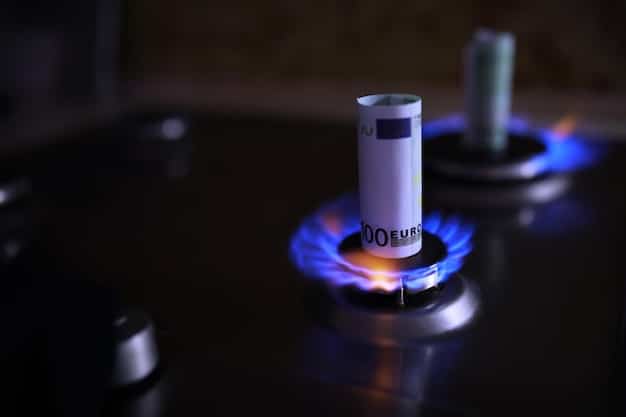
Impact on Natural Gas Power Plants
Natural gas power plants, vital components of the U.S. energy infrastructure, will face notable adjustments due to the new EPA methane regulations. These plants will need to adapt their operations to comply with the stricter emission standards. This section explores the specific impacts and required changes.
Compliance Costs and Operational Changes
The EPA regulations impose additional compliance costs on natural gas power plants. These costs may include investments in new monitoring equipment, upgrades to existing infrastructure, and increased operational scrutiny. Here are some ways:
Investing in new monitoring technologies, such as continuous emission monitoring systems (CEMS). Implement more frequent and thorough inspections to identify and repair methane leaks.
The Role of Technology in Compliance
Technology will play a critical role in helping natural gas power plants meet the new EPA requirements. Advanced sensors, data analytics, and automation can provide valuable insights into emission patterns and help optimize operations.
- Enhanced Monitoring: Deploying advanced sensors for real-time methane detection.
- Data Analytics: Using data to identify emission hotspots and optimize maintenance schedules.
- Automation: Automating leak detection and repair processes.
Challenges and Opportunities for the Power Industry
The EPA’s methane regulations present both challenges and opportunities for the natural gas power industry. While compliance may require significant upfront investments, it also opens doors for innovation and improved operational efficiency.
Balancing Energy Needs with Environmental Concerns
One of the primary challenges is balancing the need for reliable energy with the imperative to reduce methane emissions. The EPA regulations aim to strike this balance by setting achievable emission standards while allowing flexibility in compliance strategies. Addressing the imperative to reduce methane emissions involves a multifaceted approach.
Innovations in Methane Reduction Technologies
The push to reduce methane emissions is spurring innovation in methane reduction technologies. Companies are developing new sensors, leak detection methods, and emission control systems that could transform the natural gas industry. Here are some examples:
- Advanced Imaging: Developing high-resolution cameras capable of detecting small methane leaks.
- AI-Powered Analytics: Using artificial intelligence to predict and prevent methane leaks.
- Carbon Capture: Combining methane reduction with carbon capture technologies for a more comprehensive approach.
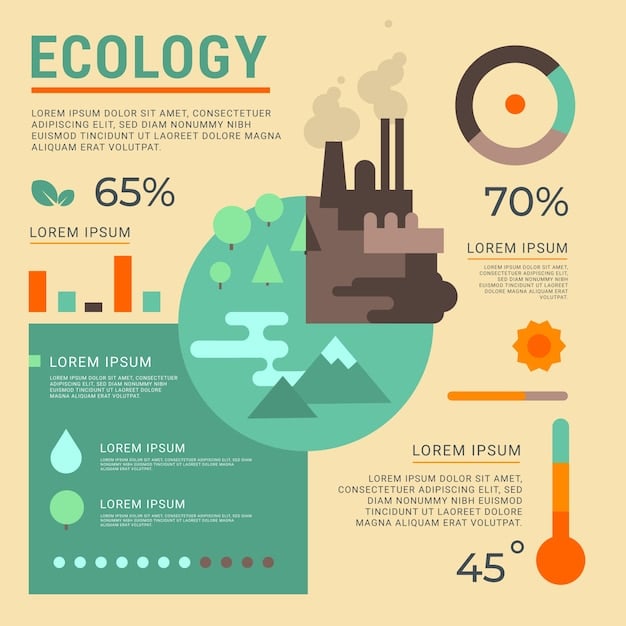
The Economic Implications of the EPA Regulations
The economic implications of the EPA’s new methane regulations are far-reaching, affecting not only the natural gas power industry but also consumers and the broader economy. Understanding these implications is essential for informed decision-making.
Cost-Benefit Analysis of Methane Reduction
The EPA has conducted a cost-benefit analysis of the methane regulations, weighing the costs of compliance against the benefits of reduced greenhouse gas emissions and improved air quality. This analysis suggests that the benefits outweigh the costs over the long term, particularly by preventing future climate impacts.
Job Creation and Economic Growth
The regulations could also stimulate job creation and economic growth in sectors related to methane reduction technologies. Companies that develop and deploy these technologies could see increased demand for their products and services. Examples are:
Developing and deploying advanced sensors and monitoring systems. Offering leak detection and repair services to natural gas power plants. Manufacturing and installing emission control equipment.
The Future of Natural Gas in a Low-Methane World
As the world transitions towards a low-carbon economy, the role of natural gas will continue to evolve. The EPA’s methane regulations signal a shift towards greater environmental responsibility in the natural gas sector, setting the stage for a more sustainable energy future.
The Long-Term Vision for Clean Energy
The long-term vision is to integrate natural gas with renewable energy sources, creating a cleaner and more resilient energy system. As technology advances and costs decline, renewable energy will likely play an increasingly prominent role. The EPA regulations set the stage for more integration of renewable energy and natural gas.
Policy and Regulatory Frameworks for Sustainable Energy
The development of effective policy and regulatory frameworks crucial for encouraging the transition to sustainable energy is necessary. This requires collaboration between government agencies, industry stakeholders, and environmental groups to create policies that promoting investments in clean energy technologies and encouraging responsible practices. These should ensure a sustainable energy future.
- Tax Incentives: Providing tax credits and other incentives for methane reduction projects.
- Performance Standards: Setting clear performance standards for methane emissions.
- International Cooperation: Working with other countries to reduce methane emissions globally.
Best Practices for Natural Gas Power Plants
To effectively navigate the new regulatory landscape, natural gas power plants should adopt best practices for methane emission management. These practices include establishing robust monitoring programs, investing in advanced technologies, and fostering a culture of environmental stewardship.
Monitoring and Measurement Techniques
Implementing enhanced monitoring and measurement techniques is essential for accurately tracking methane emissions. This includes conducting regular inspections, deploying advanced sensors, and using data analytics to identify emission hotspots. All these practices are essential to be followed.
Collaboration and Information Sharing
Fostering collaboration and information sharing within the industry can help natural gas power plants learn from each other’s experiences and adopt best practices more quickly. This could involve participating in industry associations, attending conferences, and sharing data on emission reduction strategies. This will empower the natural gas power plants.
| Key Point | Brief Description |
|---|---|
| 🔍 Leak Detection | Advanced tech for identifying methane leaks. |
| 💰 Compliance Costs | Investments in monitoring and upgrades. |
| 🌱 Innovation | Spurring new methane reduction technologies. |
| 🌎 Sustainability | Promoting a low-methane energy future. |
Frequently Asked Questions
▼
The primary goals are to reduce methane emissions from the oil and natural gas industry, combat climate change, and improve air quality. This is achieved by creating standards for monitoring, reporting, and controlling methane leaks.
▼
Natural gas power plants will need to invest in equipment and enhanced monitoring systems to find and fix methane leaks, ensuring they adhere to stricter emission standards and operational changes.
▼
Plants can use technologies such as advanced leak detection tools (drones, infrared cameras), continuous emission monitoring systems (CEMS) and data analytics to optimize maintenance schedules and reduce emissions.
▼
The economic impacts include compliance costs, potential job creation in the clean energy sector, and long-term benefits from reduced greenhouse gas emissions which could enhance overall air quality and public health.
▼
By reducing methane emissions, the rules help make natural gas a cleaner and more sustainable energy source, which can better integrate with renewable energy sources and promote more efficient power systems.
Conclusion
The EPA’s new methane regulations represent a significant step toward reducing greenhouse gas emissions and promoting environmental stewardship within the natural gas industry. While compliance may present challenges, it also offers opportunities for innovation, economic growth, and a more sustainable energy future. Natural gas power plants that proactively adopt best practices and invest in methane reduction technologies will be best positioned to thrive in this evolving regulatory landscape.
